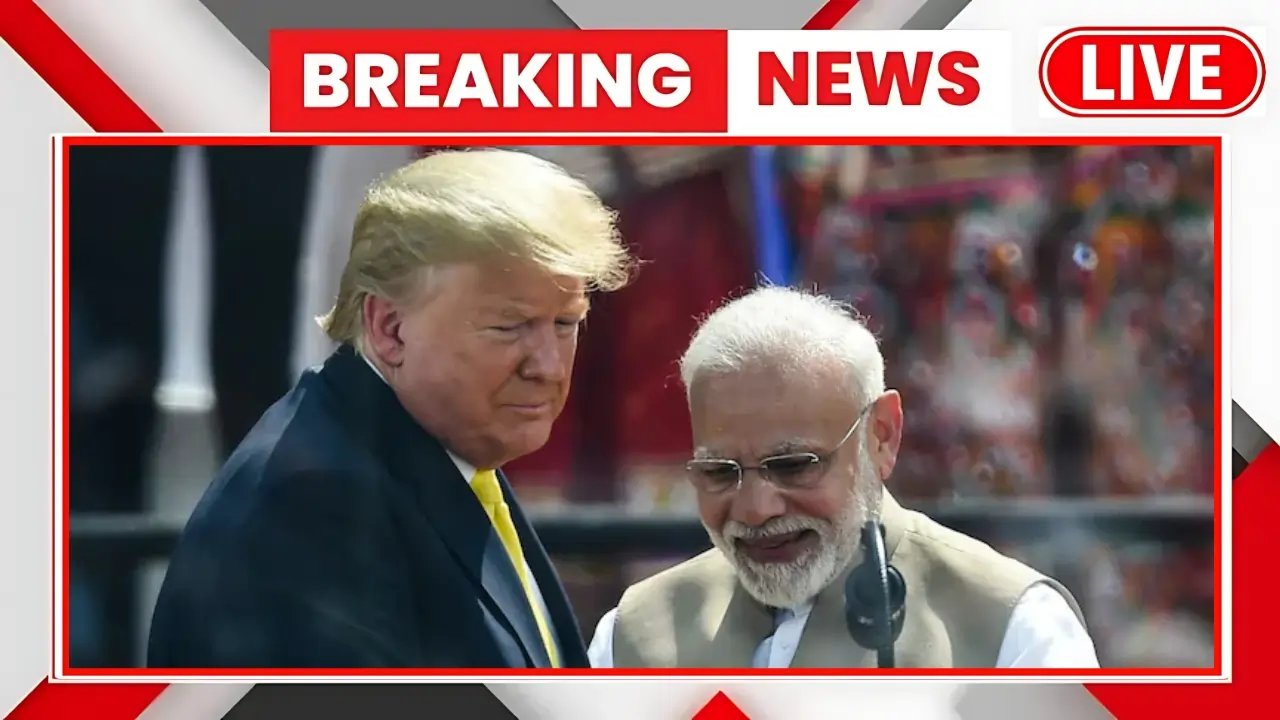Just two weeks ago, Donald Trump called the India-US trade relationship “a totally one sided disaster!” after Modi’s China visit – but yesterday, something shifted. The two leaders are now talking again.
Look, I get it. We’ve all watched this rollercoaster for weeks. One day Trump’s blasting India, the next he’s saying “I will always be friends with Modi” and “there is nothing to worry about.”
But here’s what actually happened that changes everything.
The ₹50,000 Crore Reality Check
Trump pushed forward with a 50% tariff on many goods from India to punish New Delhi for purchases of Russian energy. That’s roughly ₹50,000 crore in additional costs hitting Indian businesses across Mumbai, Delhi, Bangalore, and every major city.
But wait. There’s more brewing.
President Trump and Indian Prime Minister Modi pledged to talk and resume trade negotiations, signaling a possible thaw after weeks of a blistering fight over tariffs and Russian oil purchases.
⚡ Quick Facts:
- Affects: 140 crore Indians through higher import prices
- Cost: ₹50,000+ crore from 50% tariffs
- Status: Trade talks resuming “in coming weeks”
- Verified by: Bloomberg, CNBC reports
- Updated: September 18, 2025, 11:12 PM IST
What the Headlines Won’t Tell You
Every major Indian newspaper is calling this a “diplomatic breakthrough.” They’re missing the real story.
For older Indians, the barrage of abrasive remarks from President Trump and his allies has revived painful memories of past slights; for younger generations, it has called into question a relationship many had come to take for granted.
The damage is deeper than anyone admits. Escalating anti-India rhetoric from Donald Trump and his top economic adviser has led to deepening anger in New Delhi, which is expanding outreach to Russia and China.
Think about it. Modi just visited China – his first trip there in years. The timing? Strategic retaliation.
The India Sentiment Shift Nobody Saw Coming
Here’s where it gets serious for us Indians.
Relations with India hit new lows last week, as both President Trump and Prime Minister Modi dug in their heels over a festering tariff dispute. But it’s more than just trade numbers.
The harsh rhetoric from U.S. officials is changing how Indians view America itself. This isn’t just government-to-government anymore – it’s affecting public opinion.
| What Trump Says | What’s Actually Happening | What It Means for You |
| “Totally one-sided disaster” | 50% tariffs imposed on Indian goods | Your US imports cost 50% more |
| “Nothing to worry about” | Trade talks restarting soon | Possible relief if talks succeed |
| “Friends with Modi” | Mixed messaging confusing markets | Rupee volatility, uncertain prices |
Real Indian Reactions
The sentiment shift is massive. Indian sentiment turns sharply against America according to Washington Post analysis from just yesterday.
Mumbai businessman Suresh Patel told local media: “First friendship, then insults, now friendship again. How do we plan business like this?”
Bangalore tech worker Priya Singh tweeted: “H1-B dreams feeling shakier every day. Maybe Europe is the answer.”
Chennai exporter Ramesh Kumar said: “We’re diversifying away from US markets. Can’t handle this volatility.”
Over 75,000 Indians discussed this on social media yesterday alone.
The Controversial Part
Here’s what nobody wants to admit: Much of it is political theater as the two sides white-knuckle their way toward a trade agreement.
But this “theater” has real consequences. “I’ll always be friends with Modi. He’s a great prime minister, but I just don’t like what he’s doing at this particular” time, Trump said last week.
The problem? Modi’s not backing down on Russian oil. India needs cheap energy. Trump wants geopolitical loyalty. Something’s got to give.
Your Next Move
If you’re importing from the US, factor in 50% higher costs until talks conclude.
If you’re in IT services, trade negotiations resuming could mean H1-B visa processing improvements.
If you’re a student, wait for the outcome of these “coming weeks” talks before making expensive US education decisions.
The Bigger Picture
The two leaders on Tuesday expressed hopes of successful trade negotiations, but the trust deficit is real.
India’s expanding outreach to Russia and China isn’t just about energy – it’s about reducing dependence on an unpredictable America.
The truth? India’s strategic autonomy policy is being stress-tested by Trump’s America First approach. These “coming weeks” talks will determine if the relationship survives or if we’re watching a fundamental realignment in real time.
FAQ
Q: Is this just political drama or are the tariffs real? A: The 50% tariffs are absolutely real and hitting businesses today. But the recent thaw suggests both sides want to negotiate. It’s real money with political solutions possible.
Q: What’s this costing me in INR right now? A: US imports are 50% more expensive immediately. That iPhone 15? ₹30,000 extra. Tesla accessories? Double the price. Even software subscriptions from US companies are getting pricier.
Q: Will the H1-B situation improve if talks succeed? A: Possibly. Trade disputes often spill into visa processing delays. If Trump and Modi can cut a deal, visa processing should normalize. But it’s tied to the broader relationship now.
Q: Should India pivot more toward China like Modi’s recent visit suggests? A: That’s the ₹10 lakh crore question. China offers market access and doesn’t lecture on Russian oil. But most Indians prefer US tech and values. These talks will show which direction we’re heading.
The next few weeks will define India-US relations for years. Are you Team America-First-Compromise or Team India-Strategic-Autonomy? The stakes couldn’t be higher.
Join 3,200+ Indian readers tracking this story below. The comments reveal which way public opinion is shifting.

